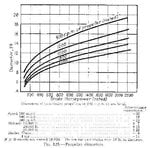wmaxt
Staff Sergeant
GregP said:There have been several Corsairs raced at Reno. One was affectionately known as the Super Corsair. It had the redoubtable R-4360 installed and was quite awesome to watch. I was present in Phoenix, Arizona at the races when it caught fire and the pilot bailed out, breaking his legs and arm ... if memory serves. Seems I recall the pilot was none other than John Penney, who recently retired from racing after winning in Rare bear.
the Corsairs were never very good at the races, possibly becuase they weren't nearly so heavily modified as the Bearcats and Mustangs. Most racing Corsairs had stock airfoils, fairly stock wingspans, and fairly stock canopies.
Most winning Mustangs, Sea Furies, and Bearcats have been rather heavily modified from an aerodynamic standpoint.
I know for a fact that Lyle Shelton's Rare Bear, when at racing speed, is more than 40 knots over the design speed of the wing (critical Mach number). That makes it VERY touchy in pitch ... and can easily depart controlled flight, the pitch dampening becomes divergent, making it imperative for the pilot to "stay on top" of the fight path.
Anyway, there have been racing Corsairs ...
Very interesting. I've seen a few racing Corsairs.
wmaxt

